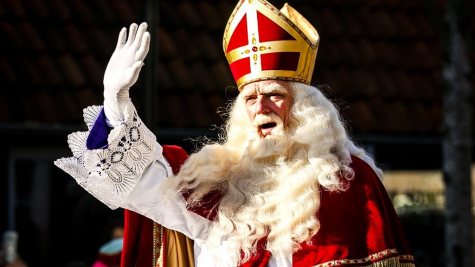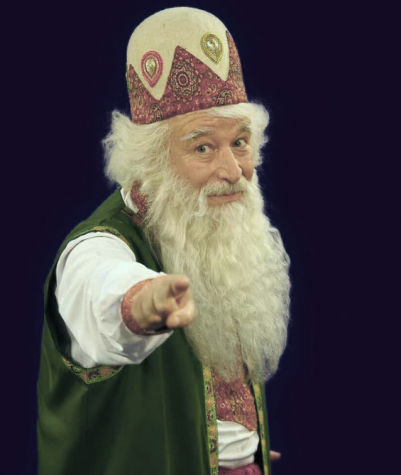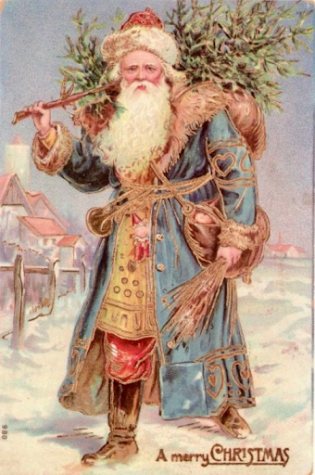The Many Faces of Santa Claus

December 4, 2020
We all know the legend of Santa Claus. A jolly, white-bearded man dressed all in red who flies a sleigh pulled by magical reindeer. This benevolent gift-giver encourages children to be good and has become a central symbol in American Christmas celebrations. However, the many countries that make up the world have many versions of Santa Claus, all specifically formatted to the religion and culture of the region. Each form Santa Claus takes is unique, but the overall happiness and joy these Santa figures bring is always present.
Sinterklaaus- Netherlands
The legend of Sinterklaaus began in the Netherlands in 1873. Sinterklaaus is an old man who wears a red coat with white, lacey garments underneath and a tall, red bishop’s hat, and many of our Santa’s qualities come from him. For example, Sinterklaaus has a large book that records the actions of the children, which is the basic foundation of Santa’s naughty and nice list. Also, Santa Claus gets his name from Sinterklaaus.

Amu Nowruz-Iran
Amu Nowruz is the Santa figure in Iranian culture. As the tale goes, Amu Nowruz travels around the Earth every year, and stops in Iran on March 21, the spring equinox. His wife, Nane Sarma, is the Iranian figure of winter, and she only gets to see her husband once a year on the day he stops in Iran. The only problem is that whenever Amu arrives, Nane has fallen asleep. Amu sits beside her and eats the food she has laid out for him, then proceeds to move through Iran and deliver gifts to children. His helper, Haji Firuz, also travels with him, dancing through the streets and demanding gifts from children. The tragic love story of this Santa figure is told every year in Iran, and Nowruz Day is celebrated by lighting bonfires and fireworks.

Joulupukki-Finland
Joulupukki is a kind-hearted, benevolent gift giver, but he was not always this way. In the early legends about Joulupukki, he was an evil man who hated children. His evil spirits would break into homes and steal toys from children. However, people began to worry that this legend was too harsh and cruel, so they reformed Joulupukki into the Santa-like character that he is today. Joulupukki wears a blue cloak and red hat. In Finnish, his name means “Yule Goat,” since he came in times of Yule and they worshipped the god Thor, whose sacred animal was a goat. One distinct difference between Joulupukki and Santa is that when Joulupukki brought gifts to children, he came in through the front door and greeted the family politely.

Father Christmas- United Kingdoms
The United Kingdoms’ Father Christmas is extremely similar to Santa Claus. Children hang stockings and pillowcases by the fireplace, and leave out mince pies for Father Christmas on Christmas Eve. Children also used to leave out brandy for Father Christmas, but that was changed to a non-alcoholic beverage in recent history because Father Christmas still had to drive his sleigh. Father Christmas was based off the Bishop St. Nicholas, who gave secret gifts to impoverished people in his home country of Turkey. However, after the United Kingdoms converted to Christianity, St. Nicholas was turned into the character of Father Christmas.

Ded Moroz- Russia
Ded Moroz, or Grandfather Frost, is the Russian Santa. On New Year’s Eve, children will hold hands and dance around in a circle to summon him to their city. After they go to sleep, Ded Moroz visits them and puts presents under their New Year’s Tree. Ded Moroz wears a blue cloak trimmed with white fur and holds a white staff. During the summer, Russian children write him letters, which he reads to determine what he will give the good children the next new year.

People all around the world may celebrate different holidays and characters, but there is always a kind-hearted, gift giving figure who brings joy to children. The happiness and excitement these “Santas” stir up bring out the best in everyone and give hope to those who are weary.
Citations
- whychristmas.com
- the-north-pole.com